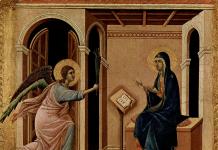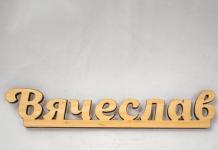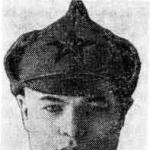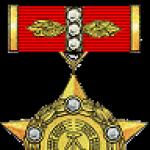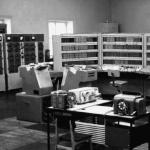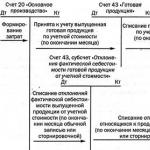Alfonso XIII of Spain. Overthrow of the monarchy and exile
The results of the city council elections held on April 12, 1931 demonstrated the impressive success of republican candidates in most provincial cities, although the total number of monarchists in city councils was significantly higher. Undoubtedly, these elections were the decisive factor in the overthrow of the monarchy. But not because the overall result was in favor of the Republicans, but because the king ceased to be a support for the monarchist candidates, and there was no longer a single party behind them that could be relied upon. By collaborating with the dictatorship, the monarch lost prestige, which the Republicans took advantage of to turn the publication of the voting results into a convincing plebiscite in favor of the republic.
The day after the elections, the "revolutionary committee" circulated a manifesto calling for the proclamation of a republic. Numerous demonstrations throughout the country demanded the formation of a provisional government and the resignation of Alfonso XIII from power. The government, chaired by Admiral Juan Batista Azcar, immediately submitted a resignation to the king, and the latter found it impossible to appoint another cabinet, since neither the so-called constitutionalists (José Sánchez Guerra, Melquíades Álvarez and Miguel de Villanova) nor the most devoted monarchists were ready for this. Almost all monarchist leaders - with the exception of Gabino Buhallal and Juan de La Cierva - strongly recommended that the monarch leave the country; they considered the fall of the monarchy and the proclamation of a republic inevitable. Even the head of the gendarmerie (civil guard), General José Sanjurjo, could no longer provide protection for the monarchy.
Abandoned by everyone, Alfonso XIII was forced to accept the advice of Romanones and submit to the ultimatum of the chairman of the Republican Committee, Niceto Alcala Zamore, who, on behalf of the Republican Committee, threateningly demanded that the king immediately leave the country with his entire family. On the night of April 14, Alfonso XIII left Madrid in his own carriage, saying goodbye to the queen and children, who a few days later also had to go into exile. The king was followed by his cousin Alfonso of Orleans, the chief chamberlain of the court, the Duke of Miranda, and Admiral Ribeira. The fugitives headed to Cartagena, where they arrived on the morning of April 15. On the same day, Alphonse sailed to Marseille aboard the cruiser Prince of Asturias, from where he hurriedly went to Paris to meet his wife and children there.
Before leaving, Alfonso XIII, in order to avoid civil war, signed a manifesto in which he admitted his mistakes and refused to assert his authority through violence, without declaring his renunciation of the throne and without expressing his readiness to abdicate the throne (the manifesto was published on April 17, 1931 in the ABC newspaper ").
During the first years of exile, Alfonso XIII tried to peacefully restore the monarchy without resorting to a military uprising. But his ideas were not understood by the majority of his varied supporters, who urgently demanded an abdication that would make possible unification with the Carlists (adherents of another dynastic branch) and the introduction of a traditional and authoritarian monarchy, very distant from the liberal one in which Alfonso XIII continued to believe. However, after one of the meetings with the monarchists (among whom were Antonio Goicoetche, José Calvo Sotelo and Pedro Sane Rodríguez) in Paris after the unsuccessful uprising in August 1932, the king finally accepted the point of view of the putschists. They suggested that he create a single monarchist party, the “Spanish Renewal,” designed to ensure the organization of the uprising. In this case, a secret agreement between conservative military officers from the Spanish Military Union and Carlist groups was assumed. They counted on the support of the Italian government, which was supposed to provide money and weapons.
But Alfonso XIII did not want to abdicate in favor of his son Juan, as urgently demanded by the groups united around the “Spanish Action”, and above all Calvo Sotelo. The delicate situation that arose caused a double crisis: between the monarchist leaders themselves, since while Calvo Sotelo demanded unconditional abdication, Goicoeche did not object to Alfonso XIII remaining on the throne, and between the king and Calvo Sotelo. During the meeting of both after the wedding of Infante Don Juan in Rome in 1935, an unpleasant incident even occurred.
These squabbles led to the fact that the king increasingly moved away from the small groups of his supporters, who were aligned with right-wing extremists and had only meager electoral potential. They (the squabbles) were the reason for his rapprochement with the Spanish Confederation of Right Autonomists, a truly mass party led by José Maria Gil Robles, which since the 1933 elections has become the most significant parliamentary faction of the Spanish right. At the end of 1935, Alfonso XIII finally decided to abandon his orientation towards any one party. Instead, he tried to force the unification of right-wing groups bound by the common goal of revising the Constitution. It was supposed to make possible the future monarchical restoration.
Although Alfonso XIII maintained constant contact with monarchist groups, his role was rather limited to supporting the idea of a monarchical restoration and acting as a mediator between the various groups. The latter were more interested in obtaining royal approval for their projects and intrigues than in the unity of the monarchist movement.
In truth, the deposed monarch also did not show too much interest in political activities. Alphonse wanted to get as much out of life as possible and did everything that he could not afford during his reign. So in the first years of exile, the deposed king caroused in expensive restaurants, took part in hunts to which he was invited by the royal houses of Europe, and constantly traveled, having visited during this time not only a thousand different places in Europe, but even in distant India, where he met with by his son Juan, who served there in the British Naval Guards.
However, his life consisted of far more than just fun and entertainment; very soon a tragic turn took place in her. After he was abandoned by his wife, who did not even come to the weddings of their children, Infanta Beatriz and Infanta Juan, in order to avoid meeting her husband, Alfonso XIII suffered a whole string of misfortunes. First, his son Gonzalo's life was cut short in a road accident in Austria, and four years later, his first-born Alfonso also died in a car accident in North America. In 1933, Gonzalo renounced his rights to the throne because he entered into a morganatic marriage with the young Cuban Edelmira Sampedro.
In exile, Alfonso XIII could not even take advantage of his fortune, which he acquired during his reign, since most of the money was invested in Spain. His overseas assets were barely enough to feed the royal family. Even the most vehement slanderers of the monarchy are unable to prove that the king's personal wealth was excessive, or to find even a single proof that the monarch had illegally enriched himself, despite the meticulous investigations undertaken by the republicans and a commission of experts into the personal fortune of Alfonso XIII.
On the morning of February 28, 1941, the former king of Spain died in Rome, where he was staying with his wife, whom he had not seen for many years. The Infante, Prince of Asturias, had shortly before been proclaimed heir to the throne.
"España" 1937
To avoid design deviations and total reconstruction, engineers shortened the hull length, making the España-class battleships the smallest of all dreadnoughts. The freeboard height was 4.6 m, and the main caliber guns were located at a height of 7.5 m from the waterline
With one smokestack, two three-legged mast towers and a small superstructure, the ship was considered one of the strongest in the Spanish fleet: it was armed with eight 305 mm guns. The mass of each gun was 67.1 tons, and they fired 385-kilogram shells with an initial speed of 902 m/s and a firing range of 21.5 km. The rate of fire was exactly one projectile per minute.
Four gun turrets with two guns each were designated by the letters A And Y in the middle of the ship. The other two gun turrets, located on the sides, were designated by the letters B(starboard side) and Q(left side). This was done to reduce the cost of construction and the vessel's displacement. Thanks to the design of the battleship, all eight main guns could fire in one salvo, which did not in any way affect the ship's performance. The secondary armament consisted of 20 102 mm cannons, six additional guns and two machine guns, and was considered rather weak. The guns were located in casemates.
Built to defend the Spanish coast, the battleship Alfonso XIII became one of the best ships of the Spanish fleet and was even considered national pride. Unfortunately, due to the imperfection of ship building technologies in Spain and the long construction period, this ship could not compete with its contemporaries from other countries.
Service in the Spanish Navy

Sketch of the battleship Alfonso XIII / España
In the post-war years, the battleship Alfonso XIII began making friendly visits to different cities: in 1920, the battleship visited Annapolis (USA, state
Views: 865Alfonso X the Wise- eldest son of the King of Castile Fernando III of Castile . He was one of the most famous rulers of medieval Spain, distinguished by a breadth of interests, depth of knowledge and poetic talent rare for a ruler. While still a prince, he took part in the battles of the Reconquista (in particular, he led the reconquest of Murcia). In an effort to increase the prestige of Castile in Europe, Alfonso fought for the crown of the Holy Roman Empire (to which he had rights through his mother Beatrice of Swabia ). However, he did not receive the support of the popes Gregory X And Nicholas III and had to abandon his plan.
Governing body Alfonso X, marked by unrest, riots and serious crises, was complex and contradictory. The king himself was a generous and magnanimous man, but too devoted to empty vanity and luxury. Moreover, he often lacked firmness in pursuing his line. He preferred scientific pursuits to military expeditions and through many works in this field he earned the nickname of the Wise from his contemporaries and descendants. He spared no expense for the university in Salamanca, established new departments here, increased its privileges and, in the end, gave this Castilian educational institution so much importance and splendor that it began to compete with the famous universities of Paris and Bologna.
Contribution Alfonso in the formation of the Castilian literary language is difficult to overestimate. Important place in literary creativity Alfonso Also occupied by religious poetry in Galician-Portuguese. Of the 462 songs he composed, 420 are poetic narratives about the miracles of the Mother of God, united in the collection Cantigas de S. MarTa (Songs in honor of the Blessed Mary). Some of the plots of these songs were subsequently widely used in fiction.
Alfonso X the Wise
(Alfonso X of Castile)
November 23, 1221 - April 4, 1284
Spanish Alfonso X el Sabio, Spanish Alfonso X de Castilla



King of the Algarve |
|
April 1, 1257 - 1273 |
|
| Predecessor | — |
| Successor | Sancho IV of Castile |
| Place of Birth | Toledo |
| A place of death | Seville |
| Religion | Roman Catholicism |
| Burial place | Seville Cathedral |
| Father | Fernando III of Castile |
| Mother | Elisabeth von Hohenstaufen |
| Genus | Burgundian dynasty |
| Wife | Violante of Aragon |
| Children | Fernando |
| Berengaria |
|
| Beatrice | |
| Fernando de la Cerda |
|
| Eleanor | |
| Sancho IV the Bold |
|
| Constanta | |
| Pedro |
|
| Juan | |
| Isabel |
|
| Children | Violanta |
| Jaime |
|
| Illegitimate children | |
| From communication with Maria Alfonso de Leon | Berenguela Alfonso |
| From communication with Elvira Rodriguez de Villada | Alfonso Fernandez |
| From communication with Maria Guillen de Guzman | Beatrice Alfonso |
| From unknown lovers: | Urraca Alfonso |
| Martin Alfonso |
|
While still an infant, Alfonso showed political and military talents, participating in government and numerous wars of his father. But having become king himself, he largely departed from a clear national policy Fernando III . True, the wars with the Moors continued, but they were fought without the proper energy, sporadically and often ended in defeat.
His first military campaign was undertaken in accordance with projects developed Fernando III . The trip to Africa in 1254 - 1255 received the approval of the popes Innocent IV And Alexandra IV and ended in defeat Alfonso X due to disagreements with the kings of Portugal and Navarre.
Instead of focusing on the war. Alfonso went to great expense to be elected Emperor of the Holy Roman Empire in 1257. This empty title brought him nothing but a quarrel with the Roman Curia. Internal affairs ( Alfonso X persistently sought to annex Navarre and Gascony to his possessions) also did not give the king the opportunity to completely devote himself to the reconquista.
The intentions of the Castilian kings to take possession of Navarre were manifested more than once in the past, and a lot of blood was shed in the struggle to take possession of the territory of La Rioja. The King of Navarre died in 1253 Teobaldo I Great and the throne passed to his fifteen-year-old son Teobaldo II . Alphonse X took advantage of this circumstance to attack Navarre, whose regent (the dowager queen Margarita ) in anticipation of such complications, enlisted the support of Jaime I . However, the war did not arise thanks to the mediation of the prelates and nobles, who managed to achieve peace.
In September 1262 Alfonso X with the support of the Emir of Granada and the naval forces of the Cantabrian cities, he suddenly attacked Cadiz and took the city with great booty. With the conquest of Cadiz, one of the centers of the Moorish pirates was destroyed, from where they raided Seville and other Castilian cities.
In 1263 Alfonso X captured Cartagena, where the Moorish uprising was suppressed. To defend the newly acquired possessions, fortresses were built in Cadiz, Rota, San Lucar and Puerto de Santa Maria (the city was founded AlfonsoX). Some time later Alfonso X took possession of Niebla. In the battle for this city, the Moors used gunpowder and cannons for the first time.
A new war was caused by the Moors and especially the Emir of Granada, who opposed the Castilians; relying on the rebel cities of Jerez and Murcia and receiving support from the Moroccans. Alfonso X in alliance with Jaime I captured Jerez, took a number of fortified points and castles and defeated the Emir of Granada and his allies. Alfonso X skillfully used the feuds and disagreements between the emir of Granada and his governors (wali) in Malaga, Guadiz and Comares. Some Castilian magnates, dissatisfied with the king, fought on the side of the Emir of Granada. In 1273 after the death of the emir Muhammad I ibn Yusuf ibn Nasr (al-Ghalib bi-llah, al-Ahmar) Peace was concluded between Castile and Granada.
The Duchy of Gascony, which became part of the Castilian state as a wife's dowry Alphonse VIII (November 11, 1155 – October 6, 1214) Eleanor of England (October 13, 1162 - October 31, 1214), just at this time she began a war with England and turned to AlfonsoX. He provided this help, intending to consolidate his power over this territory. However, in 1254 AlfonsoX signed an alliance agreement with Henry III (1 October 1207 – 16 November 1272), King of England (19 October 1216 – 16 November 1272) and Duke of Aquitaine (19 October 1216 – 16 November 1272), supporting him in the war against Louis IX Saint (April 25, 1214 - August 25, 1270), King of France (November 8, 1226 - August 25, 1270). That same year, half-sister Alfonso, Eleanor of Castile (1241 – November 28, 1290), married Edward (17 June 1239 – 7 July 1307), heir to the English throne. After this event Alfonso forever renounced all claims to Gascony.
These setbacks were minor compared to the defeat suffered Alfonso X while trying to seize the crown of the German Empire. AlfonsoX, relying on family ties with the Swabian ducal house, to which his mother belonged, declared a claim to the vacant imperial throne. Some voters proclaimed in 1257 Alfonso emperor.
Alfonso X entered into a fight with those who supported the candidacy Heinrich III English , and spared no expense to achieve this goal. He sent a squadron with landing units to Genoa and stubbornly defended his rights. However, after death Heinrich III in 1272 the college of voters decided on the candidacy of the count Rudolf Habsburg , who took the imperial throne in 1273. At the same time, the failure that befell AlfonsoX, was largely due to resistance on the part of the popes, and especially the pope Gregory X , who supported Rudolf Habsburg . Alfonso, taking advantage of a period of known calm in Castile, decided to achieve success by force of arms, but this attempt was unsuccessful. Negotiations with Gregory X were unsuccessful, and when Alfonso began to insist on his claims and caused a war in Italy, having appropriated the signs and title of emperor to himself, the pope threatened him with excommunication. As a result Alfonso X failed to take the imperial throne.
Failures accompanied Alfonso X and in the field of domestic policy. He was an adherent of the principle of royal autocracy and an enemy of feudal anarchy. His worldview was imbued with the ideas of Roman law; love of culture and the desire to master all its riches were his characteristic features. Meanwhile, in his practical activities, he encountered hostile forces, whose aspirations and tendencies were incompatible with his beliefs and were caused by selfish, egoistic interests. He fought with the nobility, arrogant, proud, unprincipled, always ready to oppose the royal power with weapons in their hands.
Coffers Alfonso X was exhausted by external wars and the extravagance of the king himself, a generous and vain man. The extravagance caused widespread discontent that political opponents Alfonso X They knew how to use it for their own purposes. The amount of tribute paid by the Emir of Granada was reduced, and at the same time Alfonso began to resort to damaging coins, which did not facilitate trade.
Despite numerous protests from the Castilians, Alfonso imposed duties on trade transactions. However, this event did not lead to the intended goal. Failures that have befallen Alfonso in the economic field, were accompanied by a number of actions of the king that were harmful to the state.
Alfonso X ceded the territory of the Algarve to the king of Portugal, freed him from fiefdom and renounced his rights to the Gascon duchy. The Castilian nobility regarded these actions as an abuse of power and as a manifestation of absolutism. This led to numerous revolts against the king.
Castilian nobles served both the kings of Aragon and Navarre, and the emir of Granada, and sometimes entered into alliances with both and even with the Muslims of Morocco, despite the privileges that the king gave them at the Cortes in Burgos in 1271.
The nobility were not afraid of the cruel punishments to which the king sometimes subjected the disobedient. Throughout his reign Alfonso fought with the Castilian nobles, especially with Nuno Gonzalez de Lara , Diego Lopez de Haro And Esteban Fernandez de Castro , all of whom were good warriors and played an important role in maintaining Castile's military strength in the border areas.
Alfonso was absent from the country when very serious events occurred that complicated the internal situation of the Castilian state. The Granadian Moors enlisted the help of the Marinids, who established their dominance in North Africa after the collapse of the Almohad power. A strong Marinid army landed at Tarifa. They were resisted, but luck in the battles did not favor the Castilians. The commander of the border strip troops died in the first battle Nuno Gonzalez de Lara and a number of other representatives of the nobility. In the second battle the Infants laid down their heads Sancho , son Jaime I , and the Archbishop of Toledo. It was only thanks to the courage of Lord Vizcaya that the troops of the Archbishop of Toledo were not completely destroyed and were able to retreat while maintaining order.
The king's firstborn and heir, Fernando , who was supposed to arrive with new reinforcements, became seriously ill and died in Ciudad Real in 1275, leaving behind two sons; the eldest of them according to the law established by himself AlfonsoX, was supposed to inherit the throne. But at the same time the second son of the king made a claim to the crown Sancho , and thus a new conflict arose. As soon as Sancho learned about the death of his brother, he conspired with representatives of the nobility who were dissatisfied with the king Alfonso, so that they would support his claim to the throne. Wherein Sancho was based on an ancient custom according to which the throne was supposed to pass to the closest relative in the king's family. Also Sancho was against transferring the crown to a minor.
Wanting to get support, Sancho promised to grant significant privileges and favors to the nobility; as a result, he brought her to his side. Alfonso conceded and announced Sancho his successor. King's daughter-in-law Blanca French (widow Fernando ) refused to accept this decision, fled with her children to Aragon, but they were unable to gain support to restore their rights. Meanwhile Sancho signed an agreement with the Aragonese king, who imprisoned both infantes in the fortress of Xativa. Blanka turned to her brother, the French king Philip III , and persuaded him to take his nephews under his protection. Philip sent an army to Spain, which for several years devastated the areas of the Castilian state bordering Navarre.
AlfonsoX, who was under pressure from the French king Philip III , uncle of the infantes Cerda , formed a new kingdom for the senior infanta on the territory of Jaen, separating it from Castile, as a vassal territory. He left all his other possessions Sancho .
I didn't like this section Sancho , and, since Alfonso defended his decision, an armed conflict arose between father and son in 1281. The fight went on with varying degrees of success. On the side Sancho was almost the entire Castilian nobility, who took advantage of the dynastic strife in order to secure their privileges and achieve even greater independence.
Representatives of the nobility convened the Cortes in Valladolid in 1282. It was announced that the powers Alfonso passed on to his son Sancho , but not the title of king. They also decided to call for help from the ruler of Morocco and pledge the royal crown to him as collateral for a loan of 60 thousand gold ducats. Thus, the Muslims intervened in the feuds of the Christians and began to devastate Castile along with the French and Aragonese.
First on the side Sancho There was not only the nobility, but also the clergy and most cities. However, soon the rush to the camp began AlfonsoX, which was joined by many representatives of the nobility and cities. In the midst of this war Alfonso fell ill and died in 1284 in Seville. With his posthumous will, he further confused the matter: he deprived Sancho throne, appointed heir to the eldest son of the deceased Fernando de la Cerda , and for younger sons Juana And Jaime allocated special kingdoms - Seville, Badajoz and Murcia.
Sancho did not recognize his father's will and declared himself king. He was crowned at Toledo on April 30, 1284 as Sancho IV of Castile .
Most of the nobility and many cities went over to his side, although the first son Fernando de la Cerda managed to enlist the support of well-known circles of the nobility. Simultaneously Juan , whose kingdom included Seville and Badajoz, was not recognized as king Sancho and rebelled with his numerous vassals, among whom was Lope de Haro , friend and colleague AlfonsoX.
Sancho took vigorous measures and resorted to bloody reprisals. He ordered to kill de Haro and arrest Juana . He also ordered the killing of 4 thousand supporters of the clan Cerda in Badajoz and 400 in Talavera. Similar acts of “justice” were committed in Avila and Toledo. However, even with such measures Sancho failed to extinguish the turmoil.
Infant Juan , forgiven Sancho , again became indignant and began military action against him, turning to the Marinids for help. The well-known incident with Guzman the Good , ruler of Tarifa, a city which the infante was besieging with the help of the Moors. Juan threatened Guzman to kill his young son, who was in the camp of the besiegers, if the fortress was not surrendered to him. Guzman the threats were not deterred, and he, remaining faithful to the king, sent the infanta his own knife so that he would stab the child with it. Juan ordered his son to be stabbed Guzman near the wall of a besieged fortress. But Tarifa did not give up, and this upset the plans of the Infant, whose position worsened also because Sancho defeated the ruler of Morocco on land and sea and scattered his squadron, prepared in Tangier for a landing in Spain.
Alfonso pursued a policy of strengthening royal power, which caused discontent among the secular nobility. During his reign, the structure of bishoprics was finally formed in the territory of southern Spain conquered from the Moors (the bishoprics of Badajoz, Cadiz and Cartagena were created).
Deeply interested in astronomy, Alfonso ordered the construction of an observatory and instructed 50 astronomers to compile new astronomical tables, named after him Alfonsov. The Castilian language acquired Alfonso important in all areas of life: he encouraged literature, ordered state acts and laws to be written in the Castilian dialect, instead of the previous custom of using barbaric Latin, even the Bible was, at his direction, translated into Castilian. Much work has been done in Alfonso on streamlining and unification of law. Instead of many local laws, the king tried to give the country a general code based on the traditions of Roman law (it was called the “Laws of the Seven Parts”). The New Code consistently promoted the idea of the omnipotence of royal power; the rights of the nobility and cities were significantly curtailed in it. But this trend reflected the wishes of the central government rather than its real capabilities. Subsequent events showed how far the concepts of the “Laws of the Seven Parts” were from reality.
Alfonso patronized the Church and spiritual knightly orders. At the same time, he often interfered in the appointment of bishops and more than once appropriated church rents. Unlucky politician Alfonso owes his fame to philanthropy, scientific and literary pursuits. He gathered at his court many scientists - both Christians and Muslims and Jews. He revived the traditions of the Toledo school of translators, and similar communities operated in Murcia and Seville.
Through the efforts of these schools, the Koran, Talmud, Kabbalah, works were translated into Castilian or Latin Aristotle , works of fiction from Eastern countries.
By order and with direct participation Alfonso a comprehensive set of laws was compiled in Castilian - the Seven Partidas, the first of which is devoted to the position of the Church and the role of the clergy in society. Of no less interest are the historical works created on the initiative of Alfonso or by himself, - Cronica general (General Chronicle) and Gran y general estoria (General History). The king's pen also includes: Los libros del saber de astronomia (Books on Astronomical Knowledge), which included the famous Tablas alfonsinas (Alphonse Tables), used by sailors for centuries, and Lapidario (Lapidary) - a treatise on precious stones and the magical properties attributed to them.
Family of Alfonso X the Wise
Father: Fernando III Castilian (5 August 1199 - 30 May 1252), king of Castile, Toledo and Extremadura (1217 - 1252), king of Leon and Galicia (1230 - 1252).
Mother: Elisabeth von Hohenstaufen (Beatrice of Swabia) (March/May 1203 - 5 November 1235), daughter Philip of Swabia (August 1177 - June 21, 1208), Bishop of Würzburg (1190 - 1191), Margrave of Tuscany (1195 - 1197), Duke of Swabia (August 15, 1196 - June 21, 1208 .), Roman king (March 6, 1198 - June 21, 1208).
Wife: from January 19, 1249 Violante of Aragon (8 June 1236 - 1301), daughter Jaime I the Conqueror (2 February 1208 - 27 July 1276), King of Aragon (12 September 1213 - 27 July 1276), Count of Barcelona (1213 - 27 July 1276), Lord of Montpellier (1213 - July 27, 1276), King of Majorca (1231 - July 27, 1276), 1st King of Valencia (1238 - July 27, 1276), Count of Urgel (1231 - 1236) , Count of Roussillon and Cerdany (1244 - July 27, 1276) and Yolanda of Hungary (Hungarian: Árpád-házi Jolánta, Magyarországi Jolánta), (c. 1215 - October 1251), Hungarian princess of the dynasty Arpadov . Due to young age Violanta I couldn't get pregnant for several years. Alfonso came to the conclusion that his wife was infertile, and even thought about the possibility of asking the pope to annul the marriage.
Fernando , died in infancy
Berengaria (10 October/25 November 1253 - 1300), was betrothed to Louis , son and heir of the French king Louis IX , but her fiancé died prematurely in 1260. She went to a monastery in Las Huelgas, where she lived in 1284.
Beatrice (November 5/December 6, 1254 - c. 1286); husband: from August 1271 Guglielmo VII (d. 8 February 1292), Marquis of Monferrato
Fernando de la Cerda (23 October 1255 – 25 July 1275), ancestor of the house de la Cerda . Married Blanche , daughter of the French king Louis IX , with whom he had two children. Since he predeceased his father, his younger brother Sancho inherited the throne.
Eleanor (1257 - after 1274/1275)
Sancho IV the Bold (12 May 1258 - 25 April 1295), King of Castile and Leon (1284 - 25 April 1295)
Constanta (February/October 1259 - July 23, 1280), nun in Las Huelgas;
Pedro (15 May/25 July 1260 - 20 October 1283), Señor de Ledesma, Alba de Tormes, Salvatiera, Galisto and Miranda
Juan (15 May/25 July 1260 – 25 June 1319), Seigneur de Valencia de Campos
Violanta (1265 - March 12, 1287/January 30, 1308); husband: from 1282 Diego Lopez de Haro (c. 1250 - 1310), Lord of Vizcaya
Besides Alphonse X had several illegitimate children.
From communication with Maria Alfonso de Leon , his aunt, the king's illegitimate daughterLeona Alfonso IX And Teresa Gil de Soverosa :
Berenguela Alfonso (? - after 1264), husband: Pedro Nunez de Guzman , but died young, leaving no descendants.
From communication with Elvira Rodriguez de Villada (daughter Rodrigo Fernandez de Villada ) :
Alfonso Fernandez (c. 1243 - 1281).
From communication with Maria Guillen de Guzman (daughter Guillén Perez de Guzman And Maria Gonzalez Giron ) :
Beatrice Alfonso (1242 - October 27, 1303); husband: from 1253 Afonso III of Boulogne (5 May 1210 - 16 February 1279), King of Portugal (4 January 1248 - 16 February 1279)
From unknown lovers:
Urraca Alfonso , husband: Alvaro Perez de Guzman (? - after 1280)
Martin Alfonso , abbot in Valladolid.
ALFONSO XIII BOURBON (Alfonso XIII de Borbón) - “African”, King of Spain May 17, 1902 - April 14, 1931).
The reign of A. XIII is divided into two periods: constitutional (until 1923) and the period of dictatorship (until the Spanish Revolution of 1931-1939). The years of his reign, on the one hand, were characterized by significant economic, social and cultural development, and on the other, by the aggravation of social, national and political problems in Spain. A. XIII was born king of Spain. Until 1902, the state was ruled as queen regent by his mother Maria Christina Habsburg-Lorena, Archduchess of Austria. A. XIII received a military education and was brought up in a religious spirit. On 05/31/1906 he married the granddaughter of Queen Victoria of England, Anne Battenberg (1887-1969), who became Queen Victoria Eugenie. From this marriage 6 children were born. A. XIII sought to restore Spain’s position in Europe and the world after the Spanish-American War of 1898, acting in the spirit of “revival” and the ideas of Spanish intellectuals of the “generation of 1898.” At the beginning of the 20th century. The king made several trips to European countries, actively participated in the resolution of two Moroccan crises, the signing of the Cartagena Agreements, and during secret negotiations with the President of the French Republic. R. Poincaré agreed in 1913 that Spain would take a position of benevolent neutrality towards the Entente countries in the event of a European war. During the First World War, Spain did not participate in the conflict and carried out an extensive humanitarian campaign under the personal patronage of the king: the abolition of death sentences and the exchange of prisoners of war, inspection of camps, searches for information about prisoners and missing persons, establishing contacts between prisoners of war and their relatives. This humanitarian campaign contributed to the rise of Spain's international prestige, which was reflected in its inclusion as a non-permanent member of the Council of the League of Nations. During the interwar period, Spanish representatives in the League of Nations actively participated in resolving international crises. During the reign of A. XIII, Spain actively waged the colonial Moroccan (Riffe) wars. The defeat of the Spaniards at Annual (07/22/1921) caused a huge public outcry and increased public criticism of the army and the monarchy. The main problem of domestic policy during the reign of A. XIII remained growing social tension, which resulted in a number of acute crises: the “Tragic Week in Barcelona” (07.26-31.1909), the 1917 crisis in Spain, the “Red Three Years” (1918-1921). The participation of the military in repression, the alliance of the monarchy and the army, as well as the weakening of the dynastic parties (Liberal and Conservative) and the erosion of the two-party political system of A. Canovas del Castillo led to the establishment of a military dictatorship. In the context of a growing internal political crisis, Captain-General of Catalonia M. Primo de Rivera carried out a coup d'etat on September 13, 1923, and the king supported him, appointing the general as head of government. The Cortes were dissolved, opposition political parties and organizations were banned, and a policy of Spanishization was pursued in Catalonia and the Basque Country. By analogy with the fascist regime in Italy, a single political party was created - the Patriotic Union and a vertical trade union - the National Corporate Organization; in 1927, a Consultative National Assembly was convened, which did not have real legislative power. As a result of the negative socio-economic consequences of the “Great Depression” in Spain, growing dissatisfaction with the dictatorship and discrediting the monarchy, A. XIII decided to resign M. Primo de Rivera and appointed General D. Berenguer as chairman of the government on January 29, 1930. The main goal of the new government was a return to constitutional norms. Anti-monarchist protests grew in the country; Republican parties opposed to the regime rallied by signing the San Sebastian Pact (08/17/1930). In February 1931, A. XIII appointed Admiral J. Bautista Aznar-Cabañas at the head of the government. His government scheduled municipal elections for 04/12/1931, during which the republican leaders won, and on 04/14/1931, the day of the proclamation of the Second Republic, the king left Madrid, traveled through Cartagena to Marseille and then to Paris, where members of the royal family arrived. In his manifesto dated April 17, 1931, A. admitted the mistakes of his reign, but did not officially abdicate the throne. The king spent 10 years in exile in various European countries and eventually settled in Rome. During the Spanish Civil War of 1936-1939, A. XIII supported the rebel generals, counting on the restoration of the monarchy, but this did not happen. 01/15/1941 A. XIII abdicated the throne in favor of his 3rd son, Don Juan, Count of Barcelona (1913-1993), which provided the legal basis for the restoration of the monarchy and the proclamation of Don Juan's son and A. XIII's grandson Juan Carlos I as King of Spain after the death of General F. Franco in 1975. A. XIII died in Rome, where he was buried. In 1980, his remains were reburied in the Royal Pantheon of Escorial.
